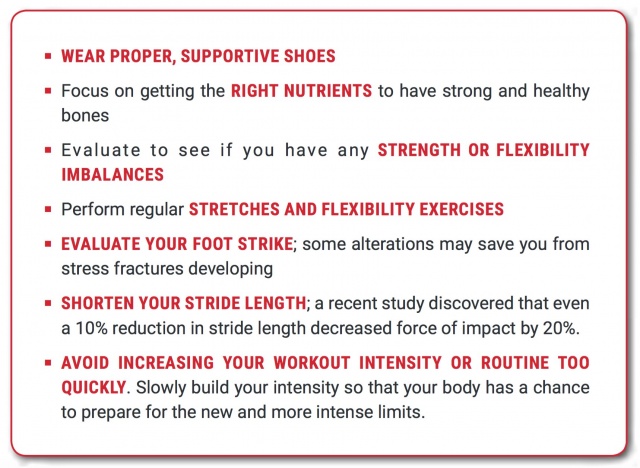 What Are Stress Fractures?
What Are Stress Fractures?
Stress fractures are a type of overuse injury and are a very specific and severe type of bone fracture. They occur when the muscles become fatigued and unable to absorb shock, which results in the shock being transferred to the bones, creating a tiny crack in the bone. Stress fractures commonly occur in weight-bearing areas of the body like the lower legs and feet. Reports state that more than 50% of stress fractures occur somewhere in the lower leg. People of all ages can be affected, especially those who engage in sporting activities like basketball, running, tennis, gymnastics, and track and field due to the repetitive striking of the feet on the ground from running and jumping, which causes trauma to the bones.
Who Deals With Stress Fractures?
Both men and women can develop stress fractures, however, studies have found that women have an increased risk due to the fact that many have a issues with decreasing bone mass (known as osteoporosis), causing their bones to weaken and leaving them highly susceptible to impact and stress. For this reason, proper nutrition is one of the major areas to focus on when it comes to preventing stress fractures. Make sure that you get enough Vitamin D, Calcium, Magnesium, Vitamin K, Folic Acid, and Vitamin B-12. All of these nutrients work together to ensure that your bones stay strong and healthy.
How Do I Know If I Have a Stress Fracture?
Many stress fractures go unnoticed at first because their pain is very slight, but without proper rest, the fracture will progress and intensify, as will the pain. Another thing to note is that there are no other visible ways to detect if you have a fracture because they are rarely accompanied by swelling or inflammation since the problem is occurring in the bones. This fact leads many athletes to push on and continue training, causing worse fractures and often forces many to take an extended break from their sport.
If you suspect that you may suffer from stress fractures, it is wise to visit your doctor. They will be able to perform an evaluation to determine your risk factor, as well as take some x-rays to determine for sure. Often it is difficult to see a fracture with a regular x-ray, so a CT Scan or MRI may be necessary.
What Do I Do If I Have a Stress Fracture?
To rehabilitate a stress fracture, it is vital to rest the injured area and to take a break from the activity that caused the fracture. Most experts suggest that, in most cases, 6-8 weeks off is a sufficient amount of time to heal a stress fracture. During this time, they state that you can perform pain-free activities, but avoid pushing yourself to uncomfortable levels.
If you engage in activities that affect the fracture, it might continue to spread and become bigger and more painful. Even if your pain levels decrease, resuming your activities too soon can lead to a larger and harder-to-heal fracture, and even turn into a chronic issue.
Tips to Help Prevent Stress Fractures

This is Part 5 of an 11 Part Series:
- (Click Here) for Prevention Tips for Shin Splints
- (Click Here) for Prevention Tips for Tendinitis
- (Click Here) for Prevention Tips for Sprains
- (Click Here) for Prevention Tips for Muscle Strains and Pulls
Check out our articles and infographics to learn a multitude of ways to start relieving your pain naturally!
Real Time Pain Relief not only cares about the quality ingredients that go into each and every one of our products – but also about the people who buy them. We hope this blog becomes a valued resource for your own personal journey to better health. For more than 17 years, Real Time Pain Relief has provided family safe pain relief made with Nature’s Ingredients. From the useful information in our articles to our high-quality natural products, we hope you feel better and pass it on!
- Log in to post comments


